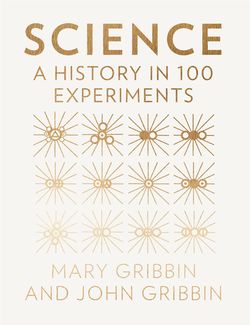Читать книгу Science: A History in 100 Experiments - John Gribbin - Страница 16
Оглавление| No. 11 | ALL THE COLOURS OF THE RAINBOW |
Isaac Newton is widely regarded as the greatest scientific thinker that ever lived, and the emphasis in this appreciation is usually on his skills as a theorist, propounding the laws of motion and, most famously of all, the law of gravity. But like his contemporaries, Newton was also a ‘hands-on’ scientist – a practical man who did his own experiments, often using equipment he had designed and built himself. This approach transformed science in the 1660s, largely because of the influence of the Royal Society, founded in the early years of that decade (it received its Royal Charter in 1663). The motto of the Society was (and is) Nullius in Verba, which can be loosely translated as ‘take nobody’s word for it’. From the outset, they did not simply accept hearsay reports of scientific discoveries, but carried out experiments and demonstrations themselves to test such claims. (In the early days, Hooke was the man who did the experiments.) Newton came to the attention of the Society in 1671 because of his practical skills – he had designed and built a new kind of telescope, useful for astronomical investigations, which focused light using a curved mirror rather than a lens. The telescope was shown to the Royal Society by Isaac Barrow, a Cambridge mathematician who had been one of the first people to recognize Newton’s ability. Newton himself was by then Lucasian Professor of Mathematics in Cambridge, but lived a quiet life and largely kept his many discoveries to himself.
© David Parker/Science Photo Library
Isaac Newton portrayed in front of his own drawing (colour added) showing the splitting of white light from the sun into the spectrum. The illustration also shows that a second prism refracts the original colours, in this case red, without further change once split, or dispersed, the second prism refracts the original colours, in this case red, without further change.
The Society was sufficiently impressed to elect Newton as a Fellow on 11 January 1672, and to ask him what else he had been working on. His reply took the form of a long letter (what we would now call a scientific paper) in which he explained his ideas about light and the experiments on which those ideas were based. Newton’s key insight was that ‘pure’ white light is actually a mixture of all the colours of the rainbow. To the ancients, white light represented a pure entity, in the same way that spheres were thought to be perfect. To suggest that white light was a mixture of colours would have seemed to them as ludicrous as the idea that planets did not move in perfect circles in their orbits.
Of course, it was well known that when sunlight passed through triangular prisms or other pieces of glass it produced rainbow patterns of colour. But before Newton people assumed that the white light passing through the glass had become adulterated as it picked up imperfections from the glass, and this had changed its nature. Newton’s genius was to devise a simple experiment which proved that this was wrong.
In the first stage of the experiment, he worked in a darkened room with heavy curtains to shut out the sunlight. A small hole in the curtain let through a single beam of light, which fell upon a triangular prism. After passing through the prism, the light shone upon a white wall on the other side of the room, where it was spread out into a rainbow pattern of colours. It was Newton who identified seven different colours in this pattern – red, orange, yellow, green, blue, indigo, and violet.
This could still be explained as a change brought about by the passage of the light through the glass. But in the second part of the experiment Newton put a second prism, reversed compared with the first prism, between the first prism and the white wall. The first prism had spread white light out into seven colours; the second prism did not make the colours even brighter (more ‘impure’) but rather combined the seven colours back into a single spot of white light. He had turned a ‘rainbow’ back into white light. The explanation was that white light is really a mixture of all the colours of the rainbow, and that light is bent as it passes through the prisms (or, indeed, inside raindrops). Some colours are bent more than others, so they get spread out or squeezed back together depending on how the prism is oriented. It is as easy to bend them back into a single beam as it is to bend the different colours out of a single beam. This was the first step towards an understanding of spectroscopy (see here), which would one day make it possible to determine the composition of the stars, using reflecting telescopes, some of them developed from Newton’s design.
This was just one of Newton’s insights into the nature of light, which were eventually gathered in a great book, Opticks, published in 1704, the year after he had become President of the Royal Society. In that book, he summed up his own understanding of the scientific method: ‘Analysis consists in making Experiments and Observations, and in drawing general Conclusions from them by Induction, and admitting of no Objections against the Conclusions but such as are taken from Experiment, or other certain Truths.’
© Universal History Archive/UIG/Science Photo Library
Replica of Newton’s reflecting telescope.
